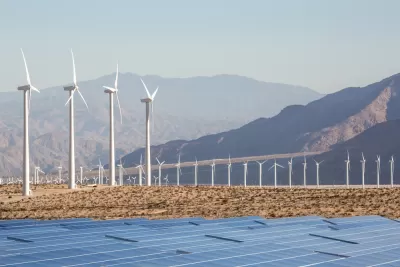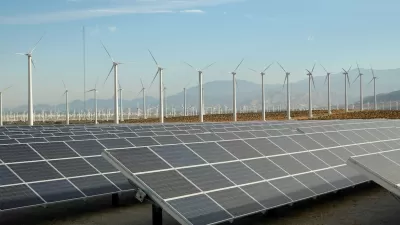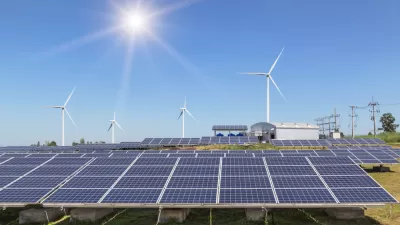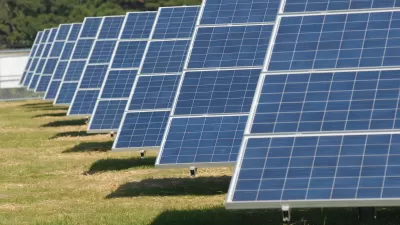Last Saturday afternoon, thanks to a combination of high production and reduced consumption, California’s power needs were met almost entirely by renewable energy sources.

For a few minutes on the afternoon of April 3, California met almost 100 percent of its electricity needs using renewable energy. As Janet Wilson reports, much of the renewable power came from solar installations in the Mojave desert, with a quarter coming from wind farms. “[Advocacy organization] Environment California pushed for 1 million solar rooftops statewide, which has been achieved, adding what some say is a more environmentally friendly form of solar power than the solar farms, which eat up large swaths of the Mojave desert and fragile landscapes.”
Hurdles remain, some at the federal level. According to Environment California executive director Laura Deehan, “Despite incredible progress illustrated by the milestone this weekend, a baffling regulatory misstep by the Biden administration has advocates concerned about backsliding on California’s clean energy targets.” For example, “a Department of Commerce inquiry into tariffs on imported solar panels is delaying thousands of megawatts of solar-storage projects in California.”
According to a separate article by Audrey Carleton, “while this particular landmark moment in renewable power was fleeting, renewable supply eclipsed the supply of natural gas by a large margin for twelve hours of the day on April 30, between 7 a.m. and 7 p.m.”
FULL STORY: Renewable electricity powered California just shy of 100% for the first time in history

Planetizen Federal Action Tracker
A weekly monitor of how Trump’s orders and actions are impacting planners and planning in America.

Restaurant Patios Were a Pandemic Win — Why Were They so Hard to Keep?
Social distancing requirements and changes in travel patterns prompted cities to pilot new uses for street and sidewalk space. Then it got complicated.

Maui's Vacation Rental Debate Turns Ugly
Verbal attacks, misinformation campaigns and fistfights plague a high-stakes debate to convert thousands of vacation rentals into long-term housing.

In California Battle of Housing vs. Environment, Housing Just Won
A new state law significantly limits the power of CEQA, an environmental review law that served as a powerful tool for blocking new development.

Boulder Eliminates Parking Minimums Citywide
Officials estimate the cost of building a single underground parking space at up to $100,000.

Orange County, Florida Adopts Largest US “Sprawl Repair” Code
The ‘Orange Code’ seeks to rectify decades of sprawl-inducing, car-oriented development.
Urban Design for Planners 1: Software Tools
This six-course series explores essential urban design concepts using open source software and equips planners with the tools they need to participate fully in the urban design process.
Planning for Universal Design
Learn the tools for implementing Universal Design in planning regulations.
Heyer Gruel & Associates PA
JM Goldson LLC
Custer County Colorado
City of Camden Redevelopment Agency
City of Astoria
Transportation Research & Education Center (TREC) at Portland State University
Jefferson Parish Government
Camden Redevelopment Agency
City of Claremont





























